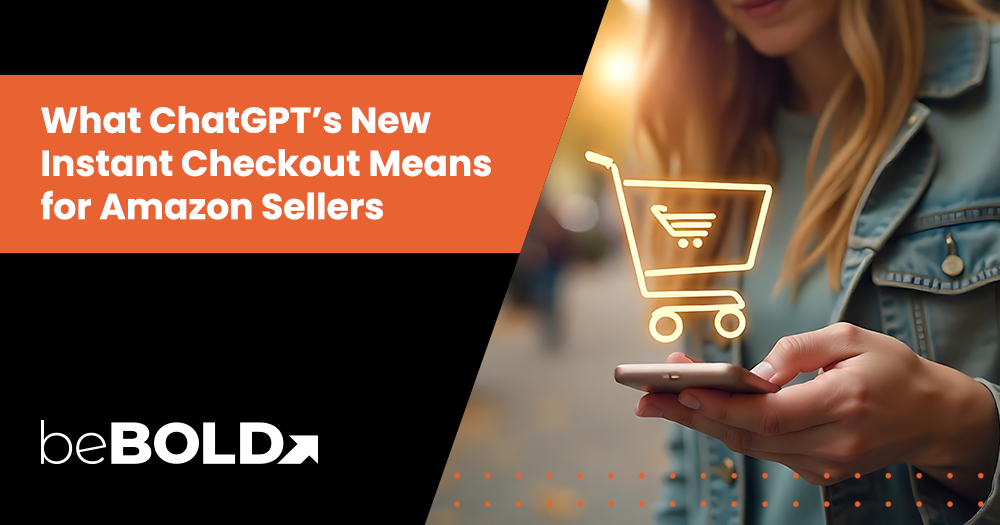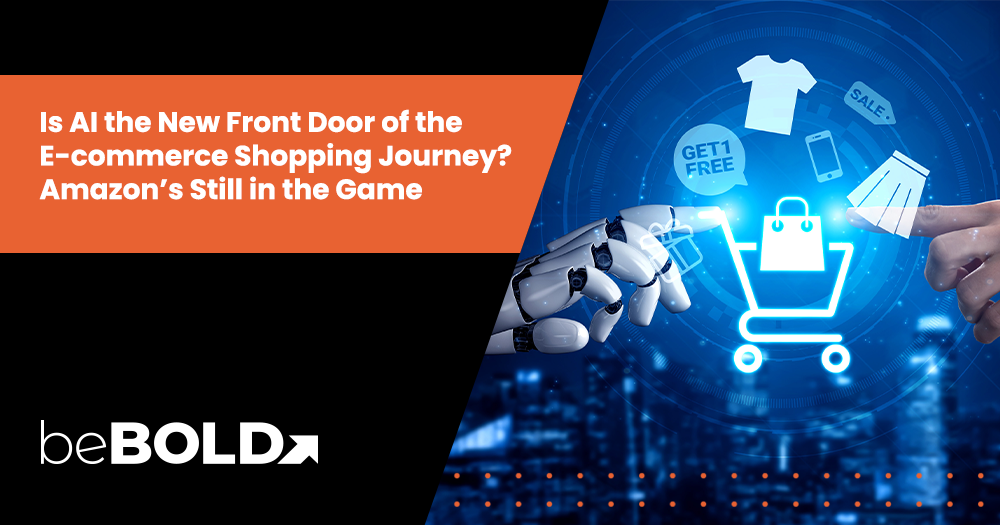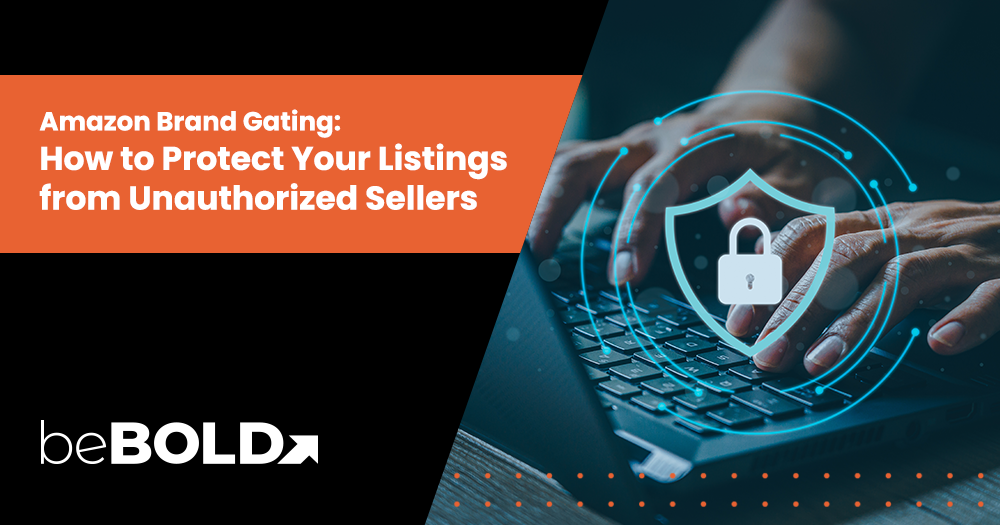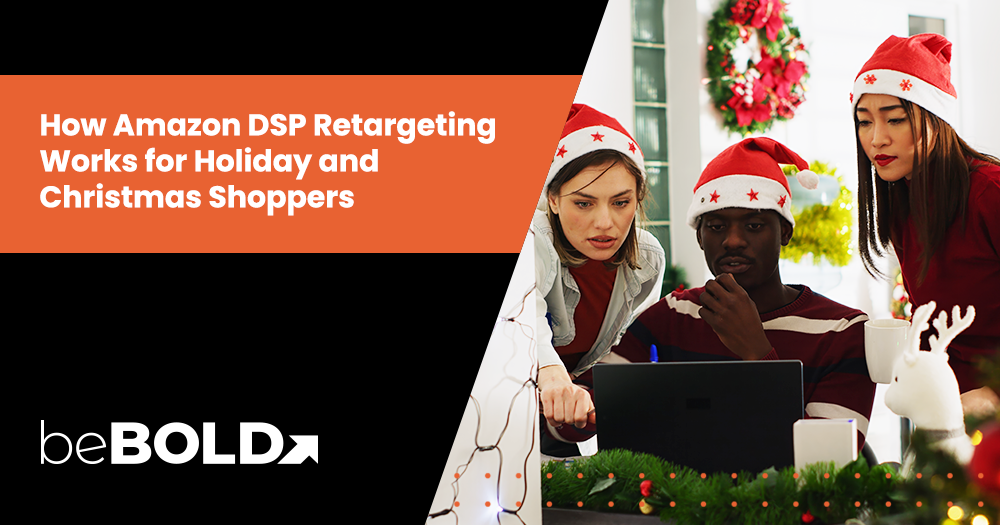Key Summary
- ChatGPT has launched Instant Checkout, letting users purchase directly inside a chat conversation 🛒
- The system is powered by the Agentic Commerce Protocol (ACP), built with Stripe, which securely connects ChatGPT with merchant backends 🔒
- U.S. Etsy sellers are live now; Shopify merchants are next, with minimal integration steps for Stripe users 🛍️
- For Amazon sellers, this could shift product discovery away from Amazon’s marketplace, creating new visibility challenges ⚠️
- Risks include higher fees, attribution gaps, and losing exposure if not ACP‑enabled 💸
- Amazon‑only sellers can’t plug in directly today; they need a DTC presence like Shopify to participate 🛒
- Competition is heating up, with Google building its own Agent Payments Protocol (AP2) 🆚
- Amazon’s response will be critical — whether it creates its own in‑chat checkout or aligns with emerging standards 🔮

Source: Adobe Stock
OpenAI has introduced Instant Checkout in ChatGPT — a feature that lets users purchase products directly inside a conversation. Instead of being redirected to a retailer’s site or Amazon listing, shoppers can now complete the entire transaction in-chat.
For Amazon sellers, this may sound like a distant concern since the feature currently ties into Etsy and Shopify. But the implications are much broader: Instant Checkout signals the rise of AI-driven commerce, where AI agents become the new “front door” to shopping. This article breaks down what Instant Checkout is, how it works, and what opportunities or risks it presents for Amazon sellers.
What Is ChatGPT “Instant Checkout” & How It Works
ChatGPT’s Instant Checkout is designed to simplify online shopping by collapsing product discovery and purchasing into one seamless step. Instead of clicking out to multiple sites or marketplaces, buyers can move from inquiry to transaction without leaving the chat window. This innovation sets the stage for how AI agents could redefine the e-commerce funnel in the years ahead.
At its core, Instant Checkout streamlines the buyer journey:
- A shopper asks ChatGPT a product question (e.g., “best carry-on bag under $300”).
- ChatGPT recommends products with images, pricing, and details.
- If a listing supports Instant Checkout, the buyer can tap Buy Now and confirm shipping/payment details inside chat.
- The merchant fulfills the order through their existing system.
This flow is powered by the Agentic Commerce Protocol (ACP), an open standard co-developed with Stripe. ACP manages the secure handoff between the AI agent (ChatGPT) and the merchant’s backend. To build trust, OpenAI highlights safeguards like encrypted payment tokens, minimal data sharing, and ensuring the merchant remains the system of record for fulfillment, refunds, and customer service.
How It’s Being Rolled Out via Etsy & Shopify
The launch of Instant Checkout isn’t happening everywhere at once. OpenAI is starting with select partner ecosystems to prove the model before expanding further. This phased approach gives both merchants and consumers time to adapt to the new shopping experience.
The rollout starts with U.S. Etsy sellers, allowing American ChatGPT users to buy directly from Etsy stores today. Shopify merchants — over a million worldwide — are next in line, with well-known brands like Glossier, SKIMS, and Vuori already preparing to go live.
For sellers, integration is relatively light-touch. Merchants using Stripe can enable agentic checkout with minimal code changes. Non-Stripe merchants can still participate through ACP’s shared token APIs or delegated payments, meaning they don’t need to abandon their current payment processor.
Importantly, merchants retain their storefront infrastructure: product metadata, inventory sync, shipping, and returns continue to flow from their existing platforms.
What This Means for Amazon Sellers (Pros & Cons)
AI-powered shopping introduces both risks and rewards for Amazon sellers. While the marketplace remains strong, Instant Checkout changes how consumers discover and purchase products.
Potential Threats & Challenges
Amazon sellers need to be aware of several risks:
- Discovery shift risk: If buyers increasingly turn to ChatGPT for product searches, they may never reach Amazon’s marketplace. Instead, the AI agent could intercept that intent and route it to Shopify or Etsy merchants.
- Visibility control: In AI commerce, it’s the agent that decides which merchants and products surface. Amazon-only sellers risk losing exposure if they aren’t part of ACP-enabled ecosystems.
- Attribution & cannibalization: Sales could migrate away from Amazon toward DTC channels, complicating attribution models and compressing margins.
- Fee pressure: OpenAI charges a small commission on Instant Checkout sales. Combined with Amazon’s own referral and FBA fees, sellers could feel extra margin strain.
- Data access limitations: Unlike Amazon Seller Central, merchants may receive less insight into buyer behavior and search queries when sales happen inside ChatGPT, making optimization more difficult.
Potential Upsides & Strategic Opportunities
At the same time, Instant Checkout offers forward-thinking sellers new opportunities:
- Leverage brand signals: Strong reviews, reliable shipping, and differentiated products make sellers more likely to be recommended by ChatGPT.
- Early-mover advantage: Those who adapt to ACP standards sooner could enjoy preferential visibility while competitors lag.
- Defensive positioning: Even if Amazon remains dominant, being present in agent-driven commerce hedges future risk.
- Consumer trust extension: By appearing directly in ChatGPT with checkout enabled, sellers may benefit from higher buyer confidence and reduced friction in completing a purchase.
Can Non-Shopify / Non-Etsy Sellers Plug In?
The beauty of the Agentic Commerce Protocol (ACP) is that it was designed as an open standard, not limited to Shopify or Etsy. This means that other merchants — including DTC brands running custom storefronts — can technically join the ecosystem if they meet the requirements.
Yes, ACP is designed to be open. Merchants outside Etsy or Shopify can apply, submit product feeds (CSV, XML, or JSON), and connect their backend to handle orders. They don’t have to use Stripe exclusively; ACP supports shared tokens and delegated payment models to accommodate a range of payment setups.
However, there are important caveats for Amazon-only sellers:
- Closed ecosystem: Amazon does not allow direct integration with ACP. Sellers cannot simply connect their FBA listings.
- Infrastructure needs: To participate, sellers must create a parallel storefront (Shopify, WooCommerce, or custom DTC) that can feed structured product data to ACP.
- Technical integration: Non-platform merchants must build API endpoints to accept and fulfill agentic orders, ensuring their backend can handle the flow of confirmations, shipping, and returns.
- Application process: Merchants must formally apply to be included, and updates to their product feed can be submitted as often as every 15 minutes.
Some sellers may adopt a hybrid approach: keeping Amazon as their primary marketplace while launching a Shopify store or lightweight DTC site optimized for ACP participation. This allows them to capture demand in ChatGPT while continuing to benefit from Amazon’s massive customer base.
What to Watch: Key Signals & Competition
As Instant Checkout continues to evolve, Amazon sellers should keep a close eye on several important developments that could shape their visibility and competitiveness in AI-driven commerce.
- Ranking rules: OpenAI claims results are “organic and unsponsored,” but sellers should watch closely whether Instant Checkout listings gain more visibility over non-enabled offers. Subtle ranking factors like availability, pricing accuracy, and product quality may influence outcomes.
- Protocol wars: Google is developing its own Agent Payments Protocol (AP2), which could compete with ACP. If multiple standards emerge, merchants may face interoperability decisions or be forced to support more than one protocol.
- Feature roadmap: Multi-item carts, expanded payment methods, international rollout, and broader merchant categories are on the roadmap. Each milestone will widen the potential buyer pool and heighten competition.
- Amazon’s response: Will Amazon launch its own agentic protocol or in-chat checkout? Sellers should anticipate competitive counter-moves, such as tighter ecosystem controls, or even Amazon developing an agentic layer of its own.
- Market adoption: With hundreds of millions of ChatGPT users weekly, adoption speed will matter. Sellers should monitor how quickly consumers shift to this channel and how early adopters gain traction.
ChatGPT Is Changing the eCommerce Market -- Learn How to Navigate It Before Your Competitors
ChatGPT’s Instant Checkout marks a turning point in conversational commerce. It blends product discovery, recommendation, and transaction into a single step, potentially reshaping how consumers shop online.
For Amazon sellers, this isn’t a signal to abandon the marketplace, but it is a reminder to future-proof your business. Learn how to fortify your brand’s presence on Amazon, so you stay on top and in front of your target audience, even as the e-commerce terrain diversifies.
If you’re an Amazon seller wondering how to stay ahead of AI-powered commerce shifts, now is the time to reinforce your marketing strategies. beBOLD can help you optimize product data, future-proof your brand presence, and reach customers even with these new changes to online shopping. Reach out today to make sure your products aren’t left behind.
You can also read more about ChatGPT’s instant checkout feature here.










Comments